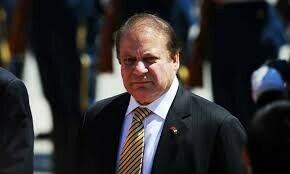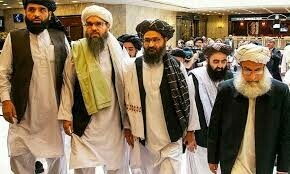Recent history naturally interests people more. It probably is a matter of relevance. Over the centuries Lahore has seen many an era begin and an equal number close. In 1022 AD the last Hindu principality of Lahore ended, never to raise its head again.
Major portions of Afghanistan remained till then part of the Punjab kingdom, run as it was, initially, from Peshawar, and then Lahore.
The Turkmen rulers who had earlier moved down to conquer Afghanistan, more so Ghazni, then moved to take Kabul. From this position of strength they began to eye the wealth and food that the sub-continent possesses. Over the centuries, and many would say, and not without reason, that they still possess that ‘predatory urge’ to take from the land of five rivers the wealth and food that it produces. The capture of Ghazni was a critical move, for in those days it was a possession of Lahore.
The ruler of Lahore from 962 AD to 1001 AD was the great Jayapala, who sensed the threat these “aggressive Turkmen” rulers of Afghanistan posed to the peace and stability of the huge Punjab kingdom.
A few words about these Turkmen rulers who were to, much later, dominate the entire sub-continent. They were, primarily, the Oghuz tribesmen who had moved westwards from Mongolia, and as this tribe was among the first to accept Islam, they brought their religion to the region, establishing Muslim minority rule for almost 800 years.
When Jayapala was on the throne at Lahore, it was Subaktigin who marched to the western-most possession of Lamghan of the Punjab kingdom. This was in the lifetime of his master Alptigin, who died in 963 AD.
The future intentions of the young Turkmen general were clear to the Lahore ruler, who prepared to pre-empt him once he took over. Subaktigin was a Turkmen slave who rose in the ranks to become a general, eventually to marry the daughter of the ruler Alptigin.
In 977 AD Subaktigin took over and immediately prepared a plan to conquer Punjab. Jayapala moved to pre-empt him. They clashed at Laghman, near Kabul, where the swift-moving Turkmen horsemen decimated the almost 100,000 large army of foot soldiers and elephant-mounted archers.
Their speed overcame a slow bulky war machine. A few centuries later Mughal ruler Babar used artillery to finally end elephant warfare.
But then Jayapala returned to battle the son of Subaktigin, Mahmud, who after his father’s death first defeated his brother Ismail, whom he imprisoned for life and took over Ghazni in 998 AD. From there he set off to establish military cantonments all along the borders of the Punjab kingdom, where he raised several small-sized armies depending on self-sufficient horsemen. Collectively this was a formidable force. In 1001 AD he moved them all to take on Jayapala at Peshawar, who was roundly defeated and returned to Lahore to commit ‘johar’.
His son Anandpala took up the fight for the shrinking Hindu kingdom of Lahore and to avenge his father’s suicide. He faced Mahmud at Lahore in 1008 and was defeated in a battle that was evenly-matched as Mahmud prepared to retreat. But Lahore was saved being ransacked and Anandpala remained in power, only to die in 1012.
Mahmud returned to Lahore in 1015 when his son Trilochanapala was in power, and completely ransacked the city. The king was killed fighting, and one account claims his own troops killed him. The royal family fled to Kashmir, where one brother Sukhapala became a Muslim named Nawasah-e-Shah.
For almost a year Lahore remained empty. Then suddenly the dead king’s son Bhimapala returned with a small army. The city returned to life. In 1021 Mahmud appointed Ayaz as the ruler of Lahore, who met resistance from Bhimapala. So Mahmud came with a huge force on his way from a bruising battle at Gwalior. He easily took Lahore and the last Hindu ruler of Lahore fled to Ajmer.
One last attempt to return was made by the son of the last ruler in 1045 AD, who laid siege to the mud-walled city of Lahore in the reign of the Muslim ruler Mod’ud. After six months of waiting, the Hindu Shahi rulers, assisted as they were by forces from Ajmer and Gwalior, were frustrated and finally left for Ajmer, never to return.
Today, almost 1,000 years later, similar small armies line those very same border lands. The cleric Ibn-Taimiyya (1263-1330) praised Mahmud, and his writings inspire the zealots of today. To add to this dangerous situation, the walled city of Lahore today has an Afghan majority. It seems the chess pieces are all in place. n











































Dear visitor, the comments section is undergoing an overhaul and will return soon.